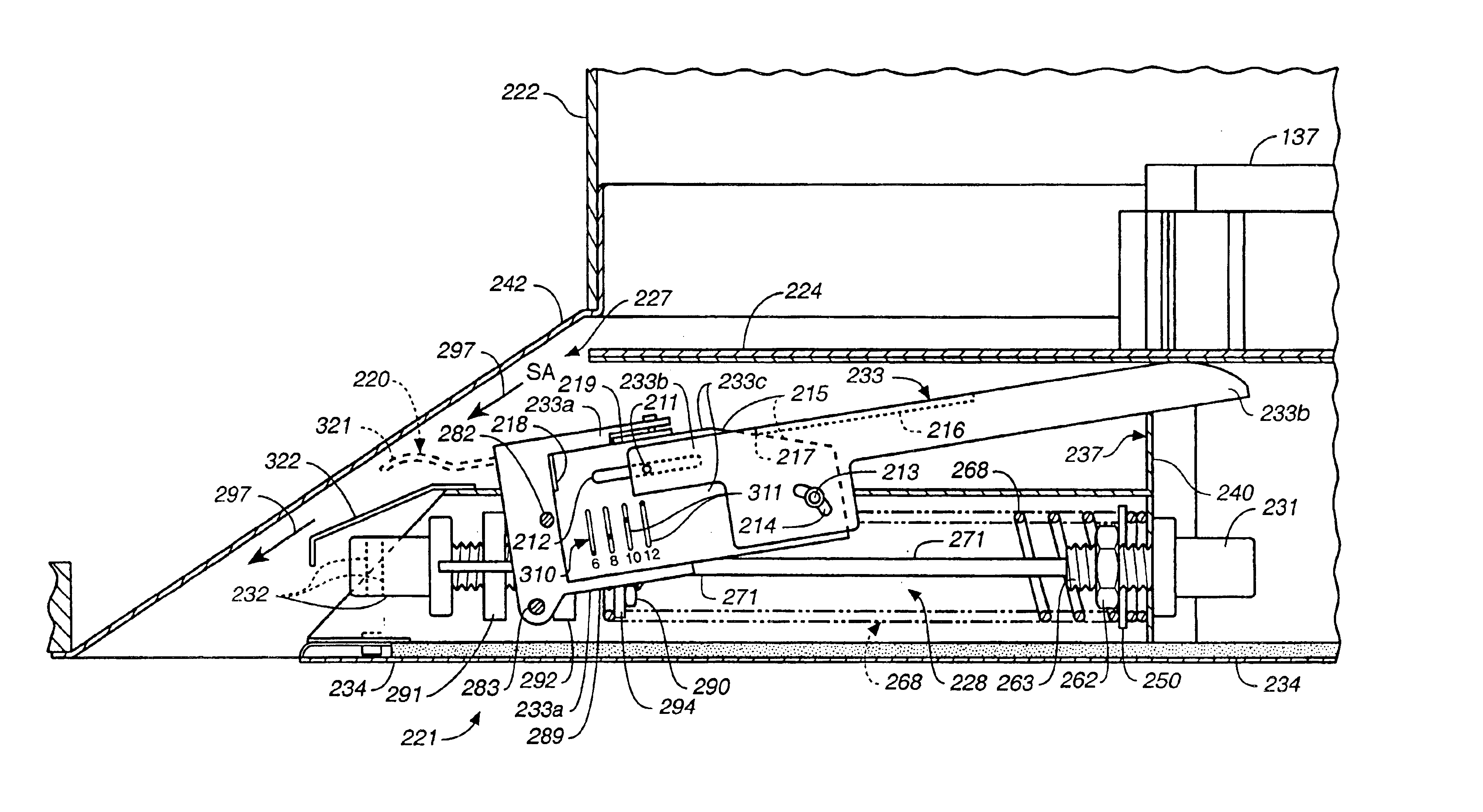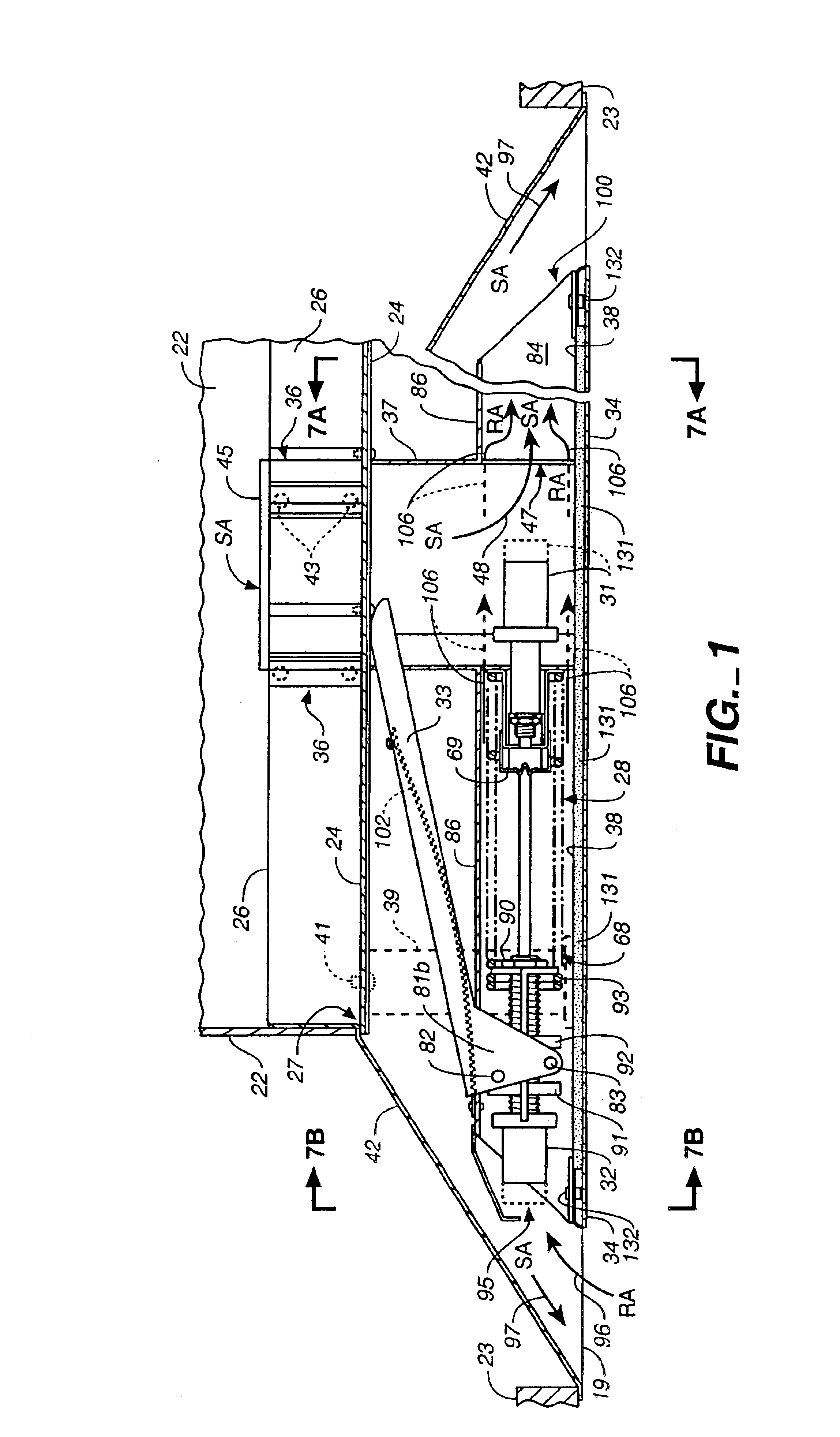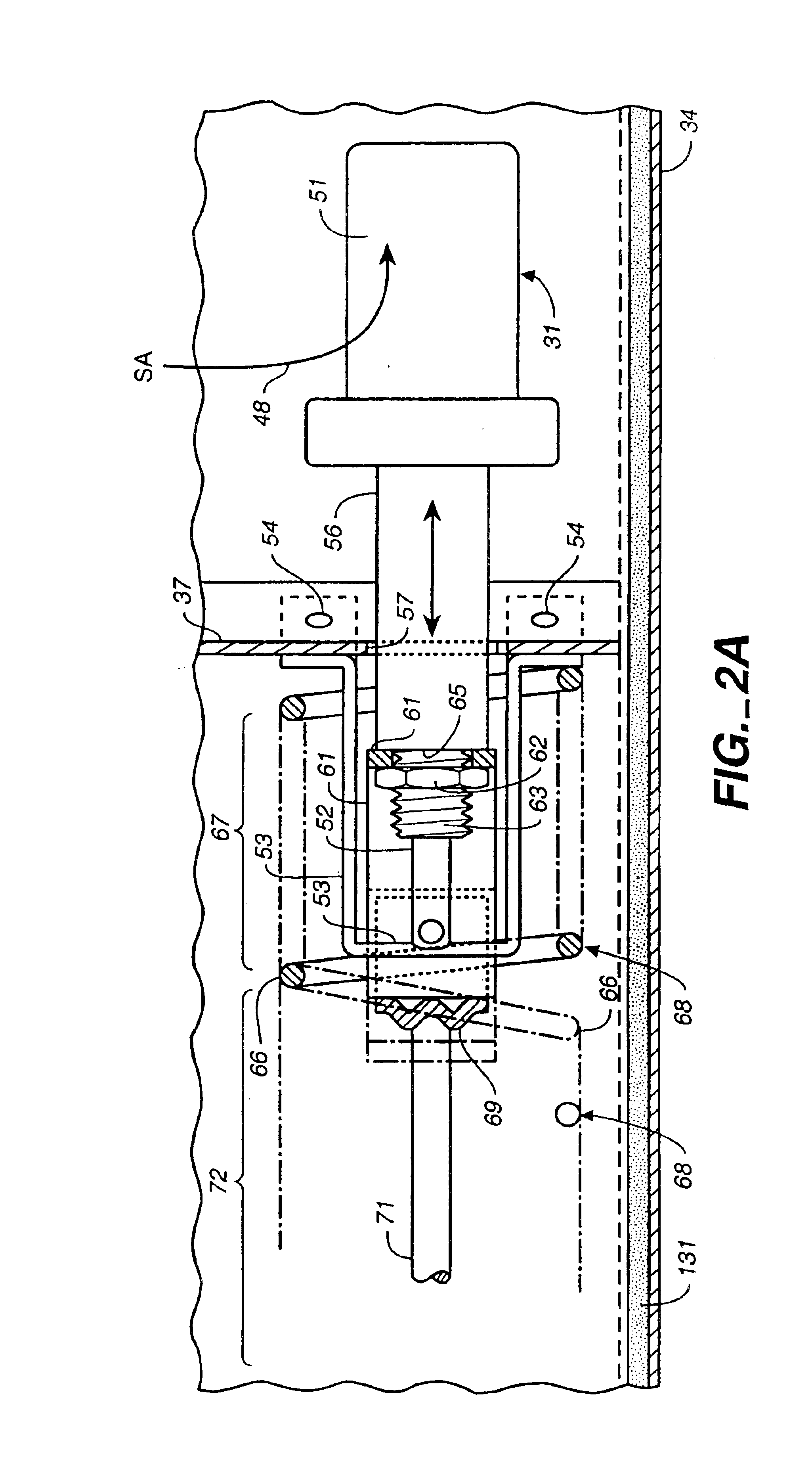Thermally powered VAV diffuser and control assembly
a vav diffuser and control assembly technology, which is applied in the direction of ventilation systems, heating types, instruments, etc., can solve the problems of difficult maintenance and/or replacement of the sensor-actuator and linkage components in the neck of the diffuser, and the vav diffuser of u.s. pat. no. 4,509,678 is not capable of variable air volume (vav) discharge in both heating and cooling modes
- Summary
- Abstract
- Description
- Claims
- Application Information
AI Technical Summary
Benefits of technology
Problems solved by technology
Method used
Image
Examples
second embodiment
Turning now to the alternative embodiment of the diffuser of the present invention as shown in FIGS. 9-12, a diffuser 221 is provided which is constructed in a manner similar to that of diffuser 21, except that a somewhat different control assembly 228 is provided.
Supply air flow tube 237 again has a supply air sensor-actuator 231 mounted in it. Sensor-actuator 231, however, is fixedly mounted to tube wall 240 so that the body of sensor-actuator 231 does not move. Piston 271 of supply air or change-over sensor-actuator 231, however, does move to the left in FIG. 9 relative to wall 240 when warm air is in tube 237 and moves to the right when cool air is present in supply air flow tube 237.
A tension (only) spring 268 is coupled at one end by plate or washer 250 and nut 262 on the end 263 of sensor-actuator 231. The opposite end of tension spring 268 is coupled by a spring gripping member 294 having four fingers 295 which are positioned in pairs of fingers on either side of piston 271 ...
PUM
 Login to View More
Login to View More Abstract
Description
Claims
Application Information
 Login to View More
Login to View More - R&D
- Intellectual Property
- Life Sciences
- Materials
- Tech Scout
- Unparalleled Data Quality
- Higher Quality Content
- 60% Fewer Hallucinations
Browse by: Latest US Patents, China's latest patents, Technical Efficacy Thesaurus, Application Domain, Technology Topic, Popular Technical Reports.
© 2025 PatSnap. All rights reserved.Legal|Privacy policy|Modern Slavery Act Transparency Statement|Sitemap|About US| Contact US: help@patsnap.com



